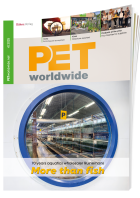It comes as a great, but welcome, surprise to find a conservation scientist saying that, for the large majority of introduced freshwater fish species, the risk of any ecological impact is less than 10 per cent. Furthermore, he then suggests that some introduced fish species should in fact be protected.Dr. Rodolphe Elie Gozlan of the School of Conservation Sciences at Bournemouth University in the UK believes that, while some introduced freshwater fish species undoubtedly have negative consequences, we live in a climate where small risks are being over-assessed. With regard to introduced freshwater species, he says that “a great majority of research focuses on the few negative cases.” Today, for example, our collective mindset is very different to what it was in Victorian times when the Society for Acclimatisation of Animals was established in the UK, and the Société Impériale d’Acclimatation was set up in Paris. The sole aim of those societies was “to introduce useful and ornamental species.” According to Dr. Gozlan, things are very different today, and the prevalent perception is that “all non-native freshwater fish introductions present a risk for biodiversity and should be considered guilty until proven innocent.”Yet the evidence indicates otherwise, since the results of his survey suggest that, for 84 per cent of introduced freshwater fish species, the risk of ecological impact is less than 10 per cent. This, he claims, is in accordance with the ‘tens rule’ proposed by M. Williamson in his 1996 book, Biological Invasions. This ‘rule’ predicts that 10 per cent of all introductions become established and that 10 per cent of these established introductions become pests.Dr. Gozlan poses a challenging question, taking into consideration the fact that the ecological impacts of alien species are generally associated with “predation, hybridisation, diet overlap, habitat modification or even the introduction of disease.” He asks: “But unless these become a problem and are associated with a quantifiable decline in natural resources (i.e. habitat degradation, competition with native species for spawning ground with implications for successful reproduction of native species, hybridisation threatening species integrity, predation on native species population resulting in their decline or a depletion of native food resources), should we be concerned?”In some cases, he believes that certain species which have now been around for a…

Alien benefits
It comes as a great, but welcome, surprise to find a conservation scientist saying that, for the large majority of introduced freshwater fish species, the risk of any ecological impact is less than 10 per cent. Furthermore, he then suggests that some introduced fish species should in fact be protected.Dr. Rodolphe Elie Gozlan of the School of Conservation Sciences at Bournemouth University in the UK believes that, while some introduced freshwater fish species undoubtedly have negative consequences, we live in a climate where small risks are being over-assessed. With regard to introduced freshwater species, he says that “a great majority of research focuses on the few negative cases.” Today, for example, our collective mindset is very different to what it was in Victorian times when the Society for Acclimatisation of Animals was established in the UK, and the Société Impériale d’Acclimatation was set up in Paris. The sole aim of those societies was “to introduce useful and ornamental species.” According to Dr. Gozlan, things are very different today, and the prevalent perception is that “all non-native freshwater fish introductions present a risk for biodiversity and should be considered guilty until proven innocent.”Yet the evidence indicates otherwise, since the results of his survey suggest that, for 84 per cent of introduced freshwater fish species, the risk of ecological impact is less than 10 per cent. This, he claims, is in accordance with the ‘tens rule’ proposed by M. Williamson in his 1996 book, Biological Invasions. This ‘rule’ predicts that 10 per cent of all introductions become established and that 10 per cent of these established introductions become pests.Dr. Gozlan poses a challenging question, taking into consideration the fact that the ecological impacts of alien species are generally associated with “predation, hybridisation, diet overlap, habitat modification or even the introduction of disease.” He asks: “But unless these become a problem and are associated with a quantifiable decline in natural resources (i.e. habitat degradation, competition with native species for spawning ground with implications for successful reproduction of native species, hybridisation threatening species integrity, predation on native species population resulting in their decline or a depletion of native food resources), should we be concerned?”In some cases, he believes that certain species which have now been around for a…

 Menü
Menü






 7-8/2008
7-8/2008












 Newsletter
Newsletter